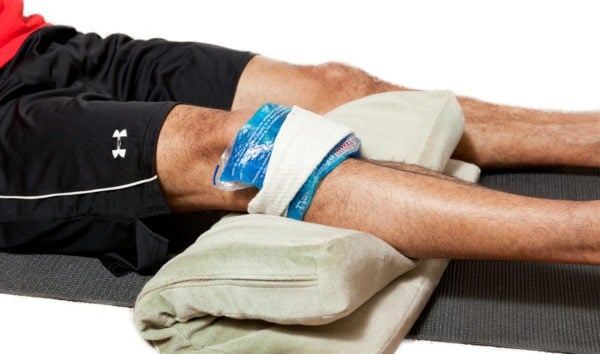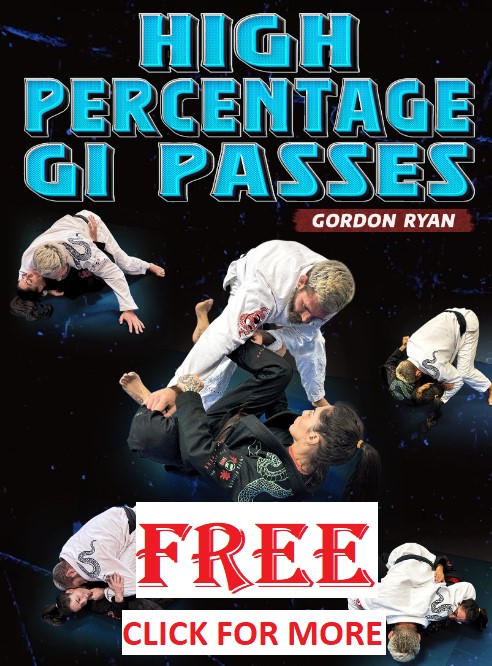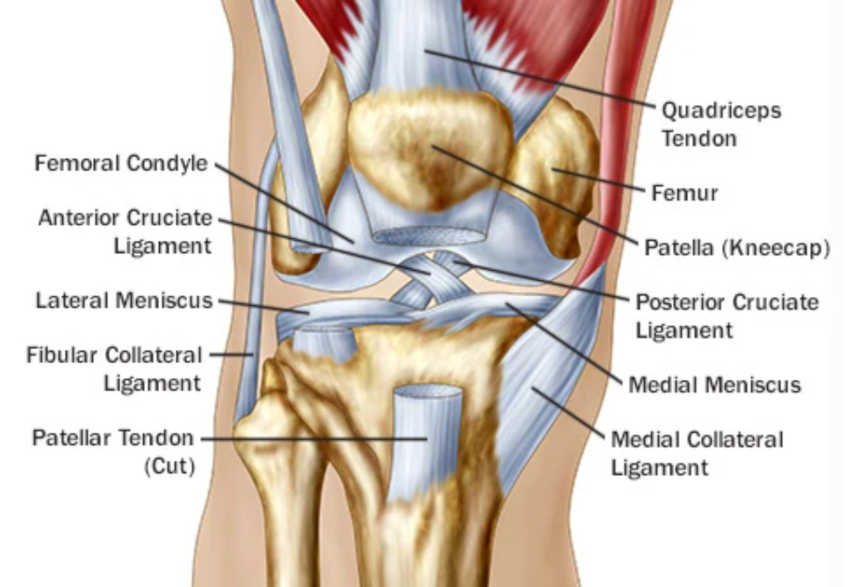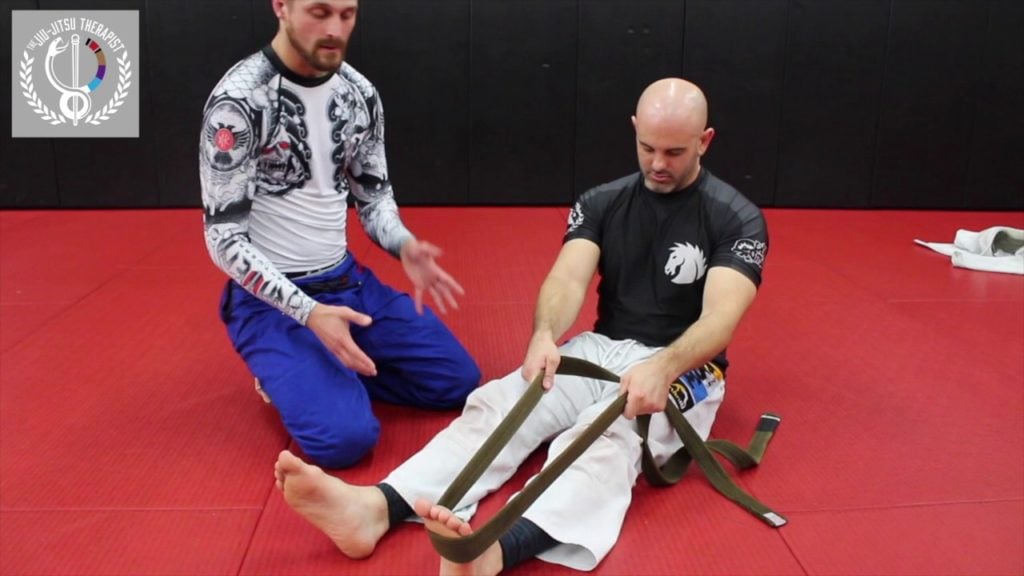
Getting injured in Brazilian Jiu-Jitsu can vary from stubbing a toe to a fully blown-out knee. There’s no need to hide and downplay the fact that injuries are a part of Jiu-Jitsu. They are a part of any port, and trying to say they don’t happen in grappling only makes them seem worse when they inevitably do. That said like in any sport, some injuries are more prevalent in Jiu-Jitsu compared to others. BJJ knee injuries rank very high among those that you can expect to experience at least once.
If you’ve never had to deal with a BJJ knee injury, you’re either not serious about Jiu-Jitsu, or you’re just about to get one. They just happen, especially in academies that don’t shy away from training takedowns on a regular basis. The knees are sensitive joints under the best of circumstances, and getting one of the nastier injuries on a knee will keep you sidelined for months or might even force you to quit. So, while not getting one would be ideal, how you come back from an injury is extremely important.
Quick Knee Injury Facts
- In Jiu-Jitsu the knee injury is one of the most common due to legs playing a huge role.
- The most common injuries that will occur in BJJ are strains, sprains, dislocations, fractures, meniscus tears, bursitis, and overuse injuries.
- Knee injuries are generally caused by bending or twisting force applied to the knee. Also, falls, direct blows, or extending the leg while side force is applied may cause injuries too.
- Knee Pain and swelling are usually the signs and the symptoms of a knee injury
- Knee injuries are best diagnosed with MRI. X-ray can’t “see” soft tissues like ligaments and tendons. History and Physical examination may be very useful.
- The treatment of an injured knee may involve RICE (rest, ice, compression, elevation) method, immobilization, physical therapy, or surgery.
- The prognosis for a knee injury depends on the injury itself and whether it requires surgery or not.
Know The Extent Of Your Injury
The knee joint is a complicated joint, with a key role in our everyday lives and in grappling. The bones that this joint connects are huge ones, and all the muscles on top and below the joint are also massive. After all, the legs are the strongest part of our bodies. However, the joint itself is extremely vulnerable, much of which is due to the fact that its most sensitive structures are really exposed.

Any BJJ knee injury is based around two major sensitive structures of the knee – ligaments or meniscus. The former is the elastic strings that help keep the knee joint together, while the menisci are the cartilage pillows that prevent the thigh and shin bone from touching each other inside the joint. Tears to any of these structures require surgery and a rehab process that you just can’t skip. However, full tears are not as common as you might think, and oftentimes you can get back on the mats quite quickly after a partial tear if you follow a solid protocol.
Most Common Types of Knee Injuries in Brazilian Jiu-Jitsu and Grappling.
Knee Sprains
Knee sprains are the type of injuries that damages ligaments that hold your knee. There are 4 ligaments in your knee:
- ACL – Anterior Cruciate Ligament
- PCL – Posterior Crucicate Ligament
- MCL – Medial Colateral Ligament
- LCL – Lateral Colateral Ligament
ACL and LCL are ligaments placed across each other in the middle of the knee and they stabilize the knee movement from back to front.
LCL and MCL are ligaments that stabilize your knee so the upper and lower bone don’t slide from slide to the side.
Ligament sprains injury depends on the amount of stretching or tearing of the ligament and how much instability in the knee injury caused.
There are three grades of knee sprains:
- Knee Sprain Grade 1 is when your ligaments are stretched and painful but no torn of ligaments and no instability is present.
- Knee Sprain Grade 2 is when the ligament is partially torn, and you feel light instability.
- Knee Sprain Grade 3 is when fibers of the ligament are torn and you feel that your knee is completely unstable
Knee Strains
Knee Strains are the type of injury when muscles or tendons that are surrounding the knee are stretched. It usually happens due to hyperextension or hyperflexion of the knee. You will usually feel pain outside of the knee joint, and you may feel dysfunction of the normal range of motion of your knee. The patellar tendon is stretched from the lower knee cap to the front of the leg in from of the tibia bone.
Knee Bursitis
Knee bursitis is when Bursa (fluid-filled pouch) in the knee is highly irritated, infected, or inflamed. Bursa is a shock absorber located around the joints. Its function is to absorb and minimize the friction between tissues. In the knee, there are two Bursas. One is above the knee cap, and the other one is below the knee joint near and in front of the tibia bone. Bursitis in BJJ is usually an acute injury, but in some cases, it’s a chronic problem.
Meniscus Tears
Tears of Meniscus happens inside of the knee. Tears may happen on the medial and lateral meniscus which are semi-round. The meniscus is articular cartilage that acts as a shock absorber. It usually locks your knee. While you can unlock it with some specific movement the chances are it will lock again. Due to low blood flow in the meniscus, meniscus injury requires surgery, but you’re back on the mats in about two months.
Knee joint dislocation
Dislocation of the knee joint usually happens due to high impact to the knee. It’s a very rare injury in Jiu-Jitsu and grappling sports. Once it happens it may damage the nerves and the blood vessels in the knee. This type of damage requires immediate surgery.
Patella Dislocation
Patella dislocation is the type of injury where your patella moves to one side of the knee. You can usually pop it back by use of your hand. While it’s not a dangerous injury it may hurt a lot and it requires rest, splinting, and physical therapy. Patella dislocation may happen again if not treated well the first time it happened.
Knee Fractures
Knee fractures are very rare in Jiu-jitsu and they happen due to high impact direct blows to the knee. They may occur due to sudden falling to the knee and people with osteoporosis are at a higher risk. Fractures of the long bones like the Tibia, Fibula, and Femur are less likely to be fractured in BJJ.
What causes a knee injury in BJJ, Jiu-Jitsu, and other Grappling Sports?
Most injuries in grappling sports happen by an external force twisting or bending the knee. Remember that the Knee is not flexible. It’s created to stay in place with only forward and backward movement. What makes the knee less likely to get injured is your hip flexibility. The hip flexibility allows your knee, read leg, to rotate.
Twisting of the knee usually happens due to Heel Hook submission, or sudden rotating movement while your lower leg is blocked by your training partner.
Bending of the knee where MCL or LCL may get hurt is when someone falls on your extended or less-extended leg.
One interesting injury that may happen in BJJ is when you’re playing guard and you suddenly extend your leg while your partner is holding it or blocking it. You’ll feel pain outside of the knee and you’ll have problems with bending the knee but in about 2 weeks you’ll feel completely ok.
Bursitis may be caused by overuse of the knee and in BJJ, prolonged kneeling usually causes it.
Degenerative joint disease, gout, and arthritis infections.
Knee Injury Signs and Symptoms
- Knee pain
- Swelling
- Heat
- Redness
- Tenderness
- Difficulty bending the knee
- Clicking sounds
- Popping Sounds
- Knee Locking
- Instability, and feeling of instability
- Bruising
Acute knee injury usually involves swelling and knee pain. Chronic and overuse injuries symptoms are popping and clicking.
Should you be worried about your knee injury?
When you get a knee injury, there’s a simple auditory cue that will usually let you know whether or not it is severe even before the onset of pain. If you hear the dreaded sound of a cloth being torn, or a loud pop, you can rest assured that you’ve messed up your knee, possibly big time. Of course, I’m saying this in the context of a knee injury, as those sounds apply to any joint of our bodies as well.
A second marker that should really have you take your BJJ knee injury seriously is swelling. The knee won’t swell up unless it is something really big, which full ligament or meniscus tears usually are. So if it swells up, especially the morning after, and it locks up, you shouldn’t take the “it’ll pass on its own” route of thinking but go to a doctor immediately.
Rehab Protocol To Recover Fast From A BJJ Knee Injury
If you have any type of BJJ knee injury following the checklist below is going to really shorten the time you spend off the mats, regardless of how serious the injury is. I speak from experience.
Go To A Specialist
The first thing to do is get some professional help and more importantly, a diagnosis. There are two menisci(plural of meniscus), two key tendons, and 4 ligaments that might be the reason for a BJJ knee injury. And that is when things have gone smoothly. In many cases of devastating injuries, more than one of these structures suffers damage.
When I’m saying go see a doctor, I don’t just mean any doctor. Go see a specialist. GO directly to someone who not just specializes in orthopedics, but really knows knee injuries. It would be ideal if they’ve grappled as well, but that is not a realistic expectation. Go to a specialist, get the diagnosis, and hear what they have to say. Following their advice in the early days of your injury is the smartest thing you can do, even if it is a small one.
Do The Time
The next point in our checklist is the hardest one for any athlete, and especially for BJJ athletes – rest. The fact that you can’t do anything athletic is scary, even when I think about it now, with all my limbs working just enough for me to train later today. When you’re nursing a BJJ knee injury you’ll need to rest, leg up in the air.
And you will have to listen to the recommendations for how long that rest should last. Doctors usually prescribe more than you need, but you’ll need to heed the advice for at least two-thirds of the recommended time on the sidelines. And this part is crucial!
If you get back on the mats too soon, you’ll be looking after your BJJ knee injury and you’ll have your other knee and other joints overcompensate, meaning you’ll likely get an injury on them as well. So, stay at home!
Rehab Exercises
Doing the time might feel like a prison sentence when it comes to training Jiu-Jitsu, but it does not mean that you can’t do anything. On the contrary, you should e looking into rehab protocols and especially rehab exercises.
One thing to remember is to skip the urge of doing the first YouTube clips that seem like it will help. First of all, do your physical therapy bid, as you should according to the type of injury you have. Next, figure out a rehab training protocol with the help of your physical therapist and specialist that will actually help you strengthen the knee.
Strengthen Up
Speaking of strengthening your knee after a BJJ knee injury, you will need to think not just about the knee, but the entire leg. Even during your time off the mats, your other leg did a lot of the work while you were recuperating. So, you’ll need to bring the injured leg up to par, and then some, if you’re to go back to the mats. If you had surgery done on the knee, this is even more important.
Single leg exercises are the way to go here. First, you should aim to get back range of motion, carefully, while supporting your weight. You can then move on to bodyweight exercises, and isometric exercises that will help you build tendons of steel. Then you will “graduate” to using resistance bands, before finally going on to machines or free weights. At that point, it is time to contemplate a return to that mats after watching all those BJJ DVDs during your time off them.
Your “Back To The Mats” Schedule
This is probably the most important thing you can do to ensure your BJJ knee injury doesn’t re-activate, or you don’t get a new one. As you come back on the mats, you should know one thing – no rolling for at least two weeks, regardless of how ready you feel. In my academy, this is the norm for any injury.
Your return on the mats is going to be purely technical for at least one week. After that time, if you and your instructor feel like you’re okay, you could do some light drills, to see how your knee reacts at a faster pace. Flow rolling, with the instructor only, will follow.
After at least two weeks you can think about position sparring if there was no discomfort during the previous phases of your reintroduction. One or two weeks of position sparring with no issues will mean a complete return to rolling, although I’d refrain from takedowns for the time being if I were you.
Choose Your BJJ Knee Brace
Finally, let’s be realistic. If you had a medium to really serious BJJ knee injury, you’ll need support if you want to train hassle-free, both physically and psychologically. Picking up a knee brace that fits your injury is simply a must and not just any old knee wrap is going to do the trick. Check out the best BJJ knee brace options you have to train pain-free!
But, don’t wear a knee brace forever as it can create the feeling that you are incapable of training without it and you’re 100% healed. Instead, wear knee pads to protect your knees from bruising and to absorb impacts.
What is the recovery time after you suffered a knee injury?
Simple strains can last for up to two weeks.
Injuries like meniscus tears that require arthroscopic surgery could keep you off the mats from one to 3 months.
Major injuries like an ACL rupture, which is probably the most common major injury in grappling, may keep you off the mats for up to a year.
Chronic knee injuries may come and go from time to time and you never know with them. Medications, physical therapies, cortisone injections, etc. may provide relief for some time.
Conclusion
A BJJ knee injury can be something that keeps you home for a week or something that might threaten your entire Jiu-Jitsu career. Being smart about it is the right approach, and following the above protocol will make sure that you get back on the mats quickly and without endangering the injured joint, or any other body part.
Related:
What happens to your knees from a Heel Hook Injury?


![Darce Choke Encyclopedia – Origins, Mechanics and Variations [2024] BJJ, choke, Brabo, BJJ Darce Choke, D'arce Choke, Darce BJJ Choke](https://bjj-world.com/wp-content/uploads/2017/11/JungPoirierLeeYahoo-218x150.jpg)












![I Got Your Back Jake Straus DVD Review [2025] I Got Your Back Jake Straus DVD Review](https://bjj-world.com/wp-content/uploads/2025/03/i-got-your-back-jake-straus-dvd-review-218x150.png)
![Shotgun Aoki Locks Mateusz Szczecinski DVD Review [2025] Shotgun Aoki Locks Mateusz Szczecinski DVD Review](https://bjj-world.com/wp-content/uploads/2025/03/shotgun-aoki-locks-mateusz-szczecinski-dvd-review-218x150.png)


![Upper Body Chain Attacks Janine Mocaiber DVD Review [2025] Upper Body Chain Attacks Janine Mocaiber DVD Review](https://bjj-world.com/wp-content/uploads/2025/03/upper-body-chain-attacks-janine-mocaiber-dvd-review-218x150.png)
![The Empty Half Guard Michael Currier DVD Review [2025] The Empty Half Guard Michael Currier DVD Review](https://bjj-world.com/wp-content/uploads/2025/03/empty-half-guard-michael-currier-dvd-review-218x150.png)

![Giancarlo Bodoni DVD Bundle Essential Connections Full Review [2024] Giancarlo Bodoni DVD Bundle Essential Connections Full Review](https://bjj-world.com/wp-content/uploads/2024/09/giancarlo-bodoni-dvd-bundle-essential-connections-100x70.png)




![Breaking Their Guard Mikey Musumeci DVD Review [2025] Breaking Their Guard Mikey Musumeci DVD Review](https://bjj-world.com/wp-content/uploads/2025/02/breaking-their-guard-mikey-musumeci-dvd-review-100x70.png)


![No-Gi Open Guard K-Guard Lachlan Giles DVD Review [2024] No-Gi Open Guard K-Guard Lachlan Giles DVD Review](https://bjj-world.com/wp-content/uploads/2024/12/no-gi-open-guard-k-guard-lachlan-giles-dvd-review-100x70.png)



![Lockdown Quickstart Guide Cameron Mellott DVD Review [2025] Lockdown Quickstart Guide Cameron Mellott DVD Review](https://bjj-world.com/wp-content/uploads/2025/03/lockdown-quickstart-guide-cameron-mellott-dvd-review-100x70.png)
![Old School BJJ Ricardo Cavalcanti Fundamentals DVD Review [2024] Old School BJJ Ricardo Cavalcanti Fundamentals DVD Review](https://bjj-world.com/wp-content/uploads/2024/09/old-school-bjj-ricardo-cavalcanti-dvd-preview-100x70.png)

![Trip Throw Dilemma Michael Pixley and Heath Pedigo DVD Review [2024] Trip Throw Dilemma Michael Pixley and Heath Pedigo DVD Review](https://bjj-world.com/wp-content/uploads/2024/10/trip-throw-dilemma-michael-pixley-dvd-review-100x70.png)

![Dynamic Headquarters Passing Jason Rau DVD Review [2024] Dynamic Headquarters Passing Jason Rau DVD Review](https://bjj-world.com/wp-content/uploads/2024/10/dynamic-headquarters-passing-jason-rau-dvd-review-100x70.png)

![Roger Gracie Closed Guard System DVD Review [2025] Roger Gracie Closed Guard System DVD Review](https://bjj-world.com/wp-content/uploads/2025/01/roger-gracie-closed-guard-system-dvd-review-100x70.png)
![Effectively Passing The Guard Luke Griffith DVD Review [2025] Effectively Passing The Guard Luke Griffith DVD Review](https://bjj-world.com/wp-content/uploads/2025/01/passing-the-guard-luke-griffith-dvd-review-100x70.png)
![Power Passing Body Locks Dan Manasoiu DVD Review [2025] Power Passing Body Locks Dan Manasoiu DVD Review](https://bjj-world.com/wp-content/uploads/2025/01/power-passing-body-locks-dan-manasoiu-dvd-review-100x70.png)
![Baby Shark Guard System Diogo Reis DVD Review [2025] Baby Shark Guard System Diogo Reis DVD Review](https://bjj-world.com/wp-content/uploads/2025/02/baby-shark-guard-system-diogo-reis-dvd-review-100x70.png)
![Crush The Guard Vagner Rocha DVD Review [2024] Crush The Guard Vagner Rocha DVD Review](https://bjj-world.com/wp-content/uploads/2024/10/crush-the-guard-vagner-rocha-dvd-review-100x70.png)
![Reverse Armlock Magid Hage DVD Review [2024] Reverse Armlock Magid Hage DVD Review](https://bjj-world.com/wp-content/uploads/2024/12/reverse-armlock-magid-hage-dvd-review-100x70.png)
![Baseball Chokes From Everywhere Magid Hage DVD Review [2025] Baseball Chokes From Everywhere Magid Hage DVD Review](https://bjj-world.com/wp-content/uploads/2025/01/baseball-chokes-from-everywhere-magid-hage-dvd-review-100x70.png)

![Heavy Top Game Fabiano Scherner BJJ DVD Review [2025] Heavy Top Game Fabiano Scherner BJJ DVD Review](https://bjj-world.com/wp-content/uploads/2025/01/heavy-top-game-fabiano-scherner-bjj-dvd-review-100x70.png)